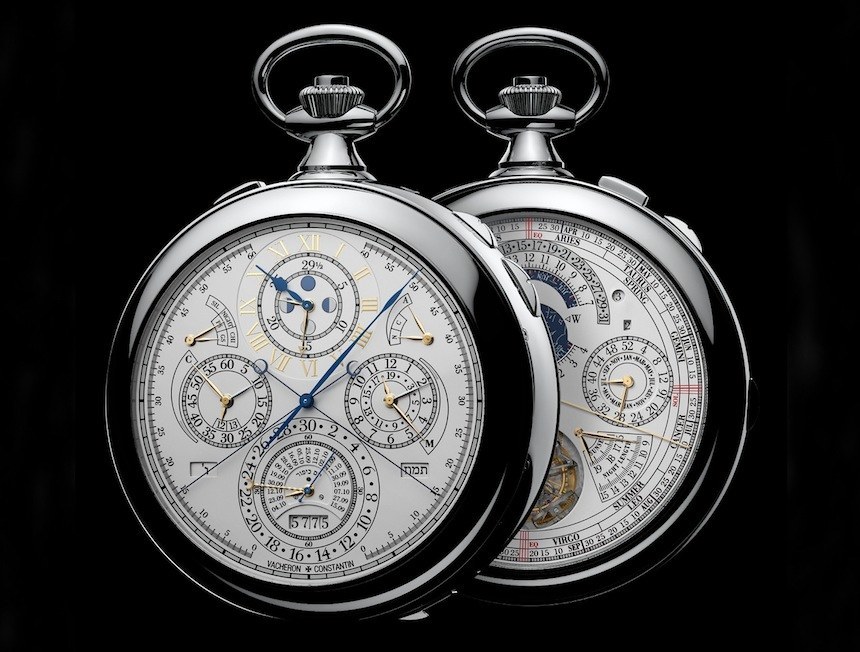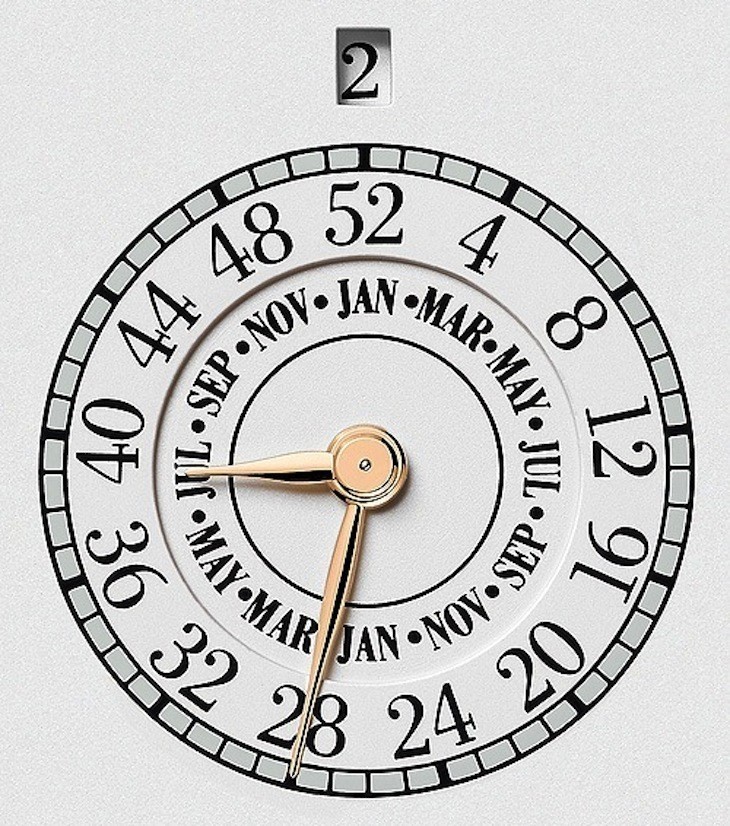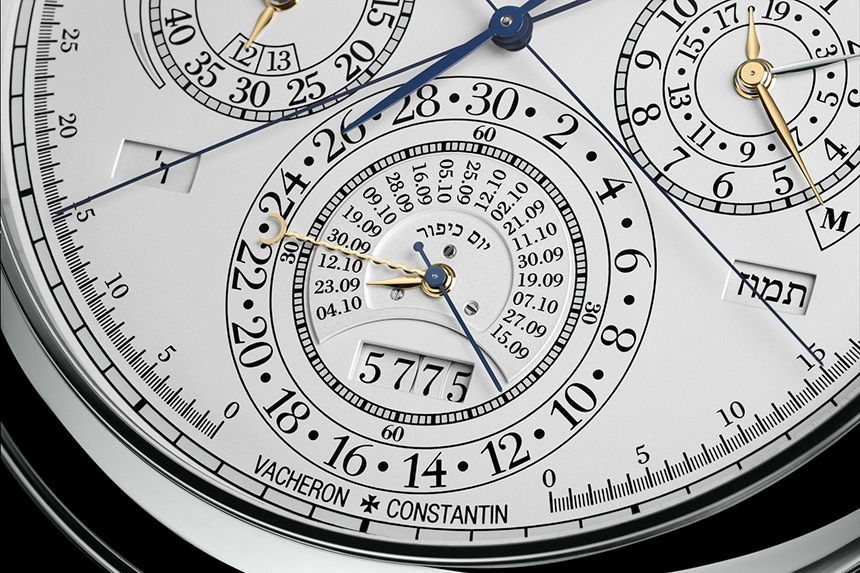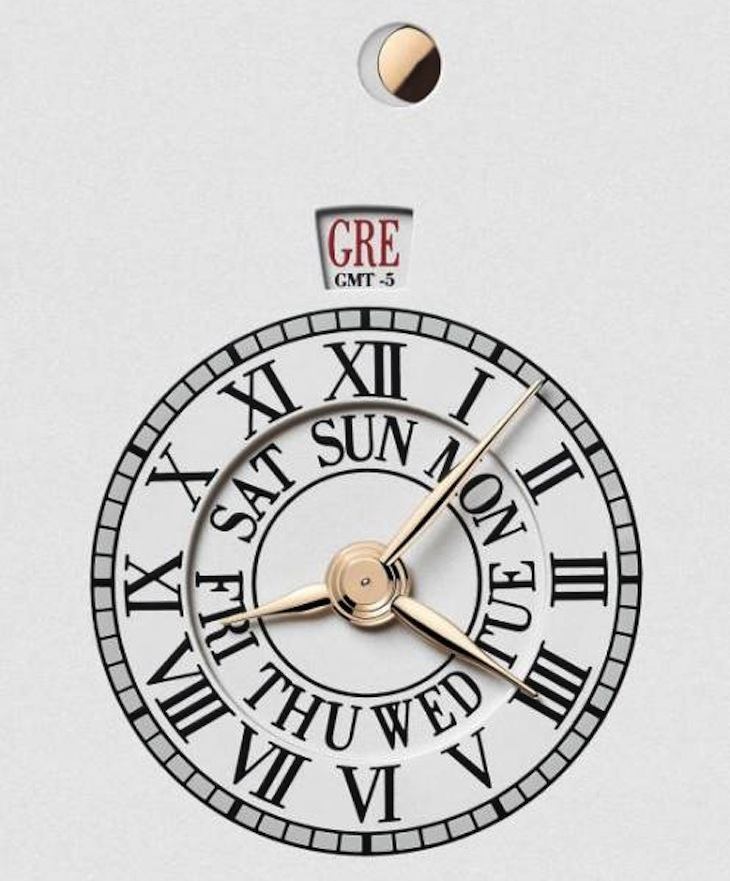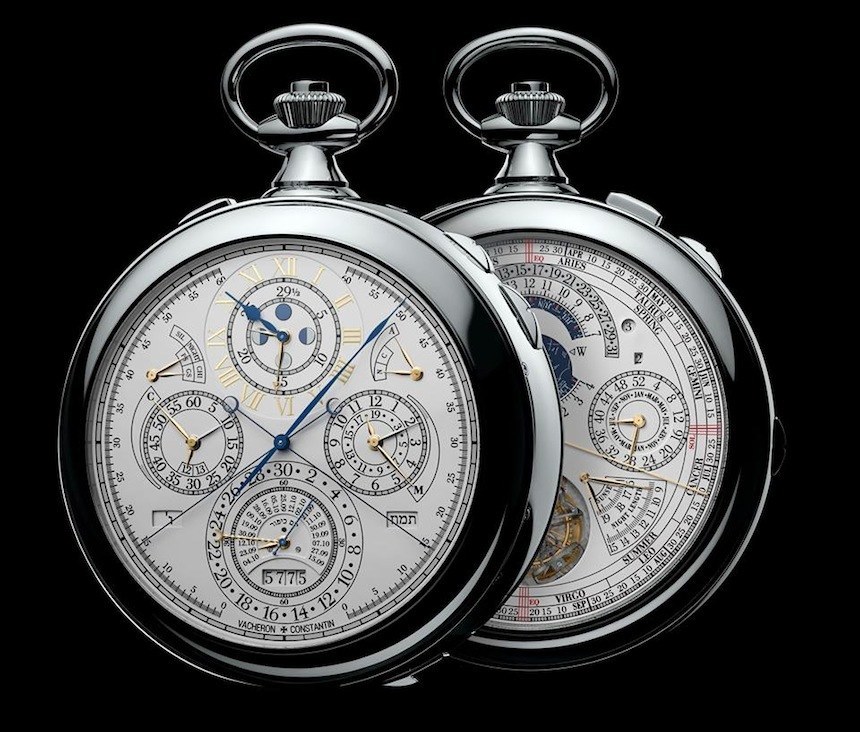
To celebrate its 260 years of uninterrupted history, today, Vacheron Constantin has revealed the Vacheron Constantin Reference 57260 pocket watch, which, according to the manufacture, is the most complicated watch ever made. Commissioned by one of the top collectors in the world and the result of eight years of research, development, prototyping, manufacturing, and assembly all performed in Vacheron Constantin’s Atelier Cabinotiers haute horlogerie workshop, this unique piece was conceived to be the most complex mechanical timepiece ever created – taking the title from another pocket watch, the Patek Philippe Caliber 89 pocket watch and its 33 complications and 1,728 components.
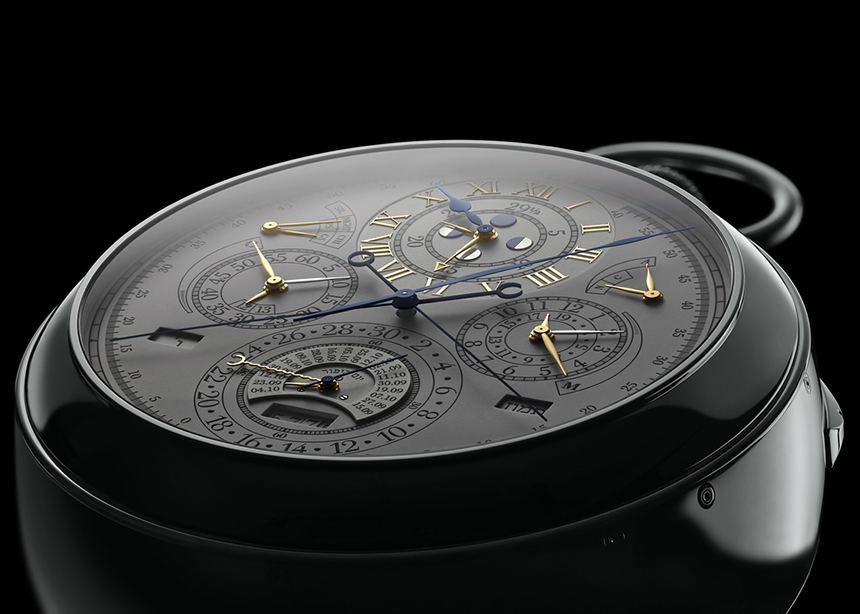
It is here, at the beginning, where we should mention that there is not one definitive rule as to what can and cannot be called a complication. Theoretically, everything beyond the simple timekeeping functions (hours, minutes, seconds), all functions could be called that, but some argue that features such as retrograde date displays or even the tourbillon do not count as such. Nevertheless, we will refer to these functions cumulatively both as complications and features – and when you count all of them, you will find that the Vacheron Constantin Reference 57260 pocket watch has a record-setting 57 complications.
We will look at all the important and cool new features in further detail below, but for now, let’s not mess around and begin with the real deal, a full list of the 57 complications of the Vacheron Constantin Reference 57260 pocket watch:
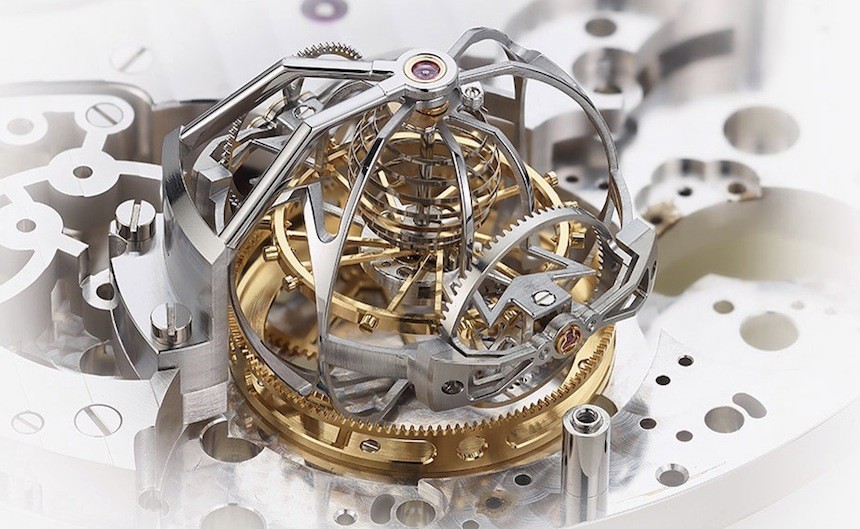
Chronometric features and complications:
- Hours, minutes, seconds;
- Armillary sphere tourbillon;
- Triple-axis tourbillon;
- World Time Indication with separate 12 hours and minutes, day, and day-night display;
- Balance wheel with variable inertia and spherical hairspring;
- Triple-column-wheel split-second “rattrapante” chronograph with 60-minute and 12-hour totalizers;
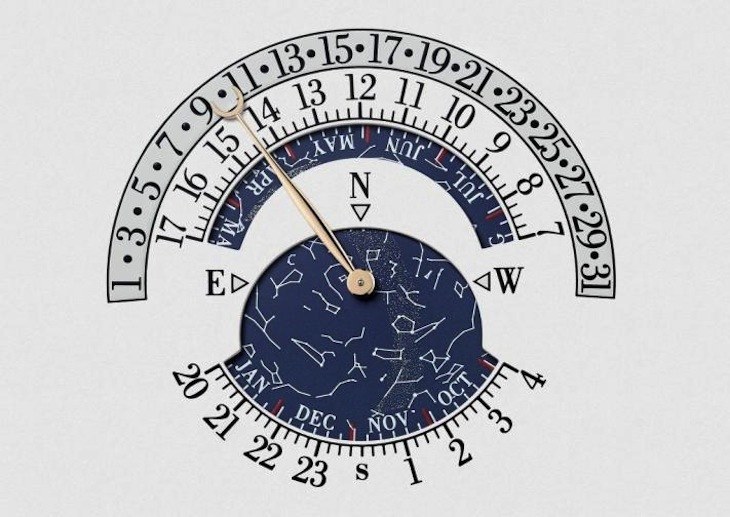
Astronomic complications:
- Perpetual Gregorian Calendar;
- ISO 8601 Financial “Business” Calendar with number of the day and week indication;
- Indications for the day of the week, date, weeks, months, leap years;
- Retrograde Date;
- Hebraic Perpetual Calendar with date, name of the day and month, number of months (12 or 13) in the Hebraic year; secular calendar, century, decade and year;
- Golden Number indication with 19-year cycle;
- Sky chart showing the constellations visible in the night sky from the owner’s city;
- Indications for seasons, equinoxes, solstices, signs of the Zodiac;
- Sidereal time measuring 23 hours, 56 minutes and 41 seconds per day;
- Sunset and Sunrise indications;
- Length of day and length of night;
- Phases of the Moon that needs to be adjusted by 1 day every 1,027 years;
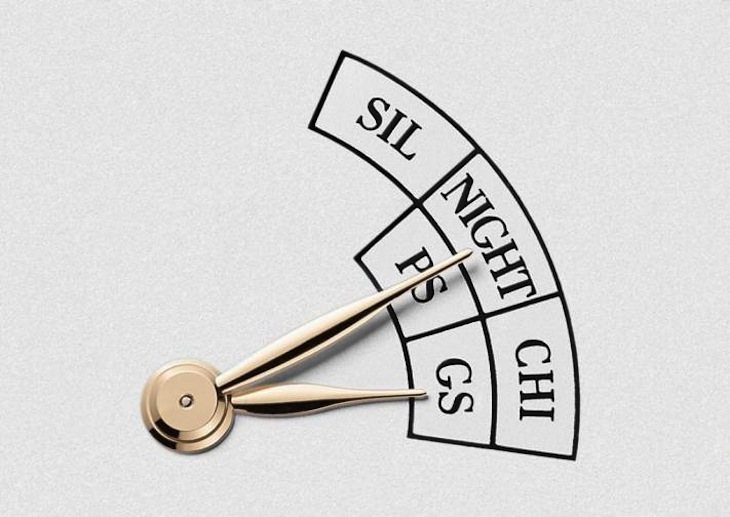
The mode selector indication for the sonnerie chiming mechanism: Silent, Night (silent between 10PM and 8AM), and Chiming are the options, while the sonnerie can be Petite or Grande
Chiming complications:
- Petite Sonnerie;
- Grande Sonnerie;
- Minute Repeater;
- Westminster chime for the sonnerie and repeater with 5 gongs and 5 hammers, playing the same tune as London’s Big Ben. The Vacheron Constantin Reference 57260 can chime the time on demand, or “en passant,” i.e., as it passes;
- Striking barrel disengaging system to prevent damage to the barrel when fully wound;
- Silence, Chiming, and Night time modes for the sonnerie, the latter making the sonnerie silent between 10PM and 8AM;
- Alarm with power-reserve and strike-silence indications and with two different tones that can be chosen when setting the alarm: Westminster chime or single-strike alarm;
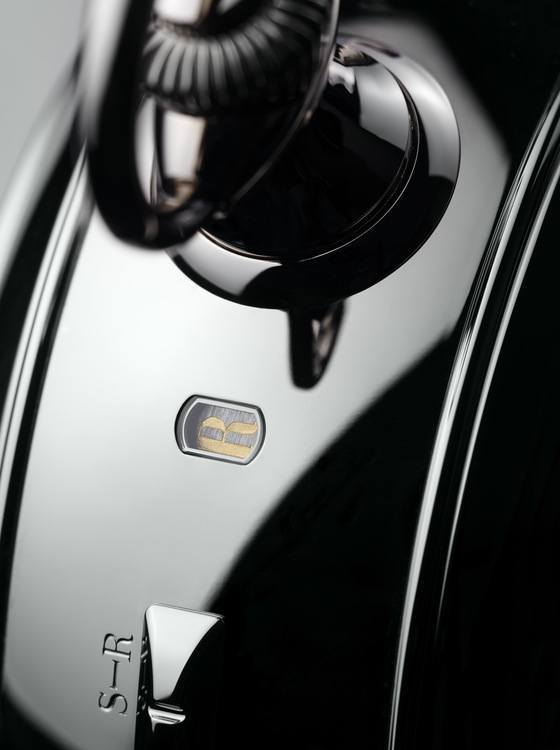
The crown function indicator window, displaying the position of the crown: R = rewinding; C = sky chart & alarm correction; M = time-setting
Additional features and complications:
- Power reserve indicator for the main barrel and the striking mechanism;
- Crown position indicator;
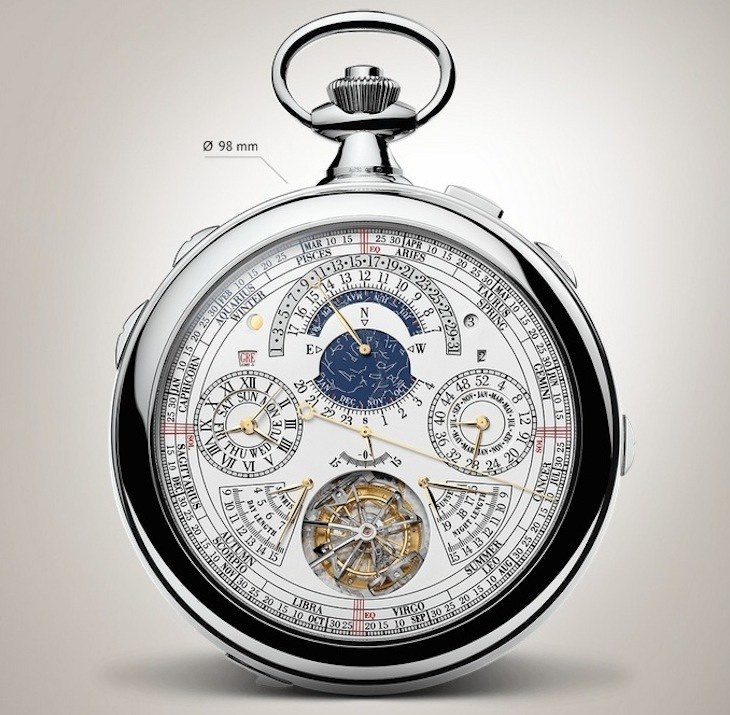
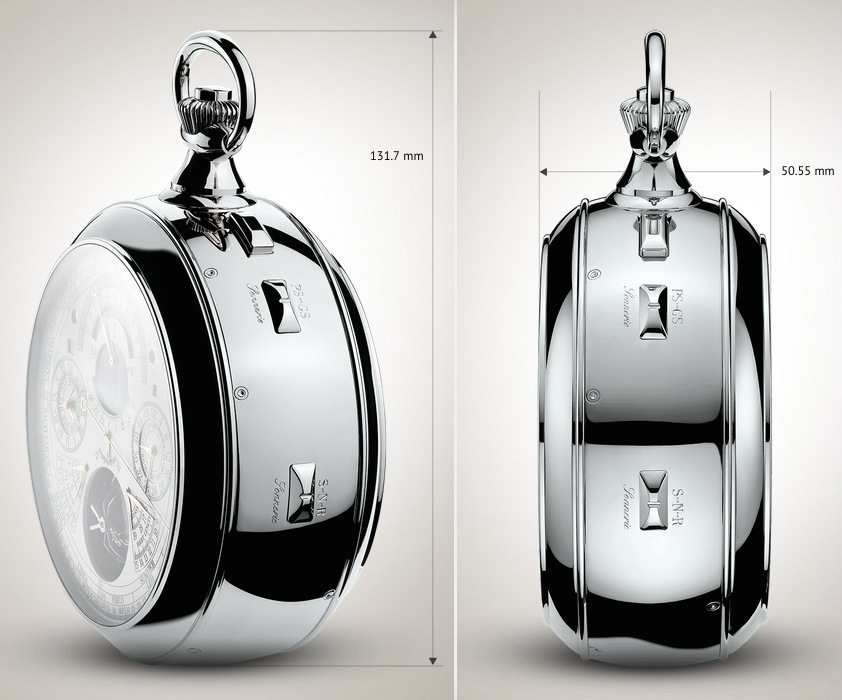
That is not simply a long list, but quite possibly the longest one ever to describe a mechanical timepiece’s complications. Measuring 98mm in diameter, 131.7 mm tall and 50.55 mm thick, what is perhaps just as impressive as this seemingly endless number of features and complications squeezed in there, is the fact that the craftsmen at Vacheron Constantin’s Atelier Cabinotiers have not only created the most complicated watch, but also packed it with some completely new functions and features. Coming up right below is a run-down on the most impressive and interesting ones from that extensive list, all that you don’t want to miss.
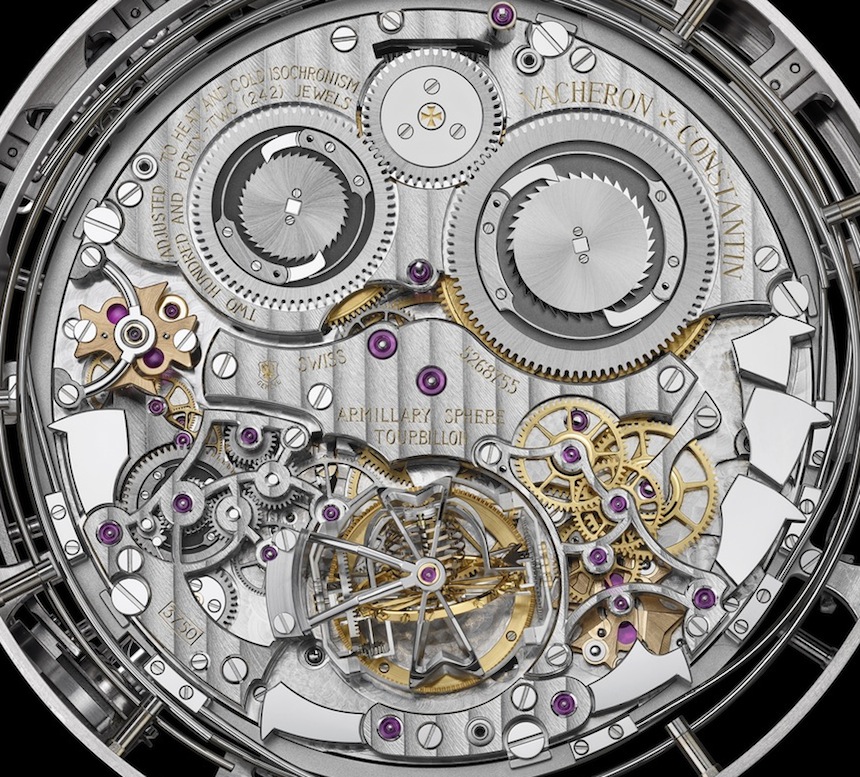
Just when you thought hardly anything new that’s called a tourbillon could possibly be conceived, the Vacheron Constantin Reference 57260 comes out with what they have titled the “Armillary sphere tourbillon.” Sure, exceptional chronometry is important, as most all other complications inside the Vacheron Constantin Reference 57260 feed off of the actual time – the astronomical and chiming indications and all the rest require accurate time to be kept for them to make sense to even exist in the first place. The reason for its weird name is that the tourbillon mechanism is visually reminiscent of the armillary sphere, a scientific instrument comprising interlocking spheres. The armillary tourbillon is a triple-axis tourbillon whose innermost cage rotates at a very fast, 15-second pace, revealing the company’s Maltese cross logo every so often.
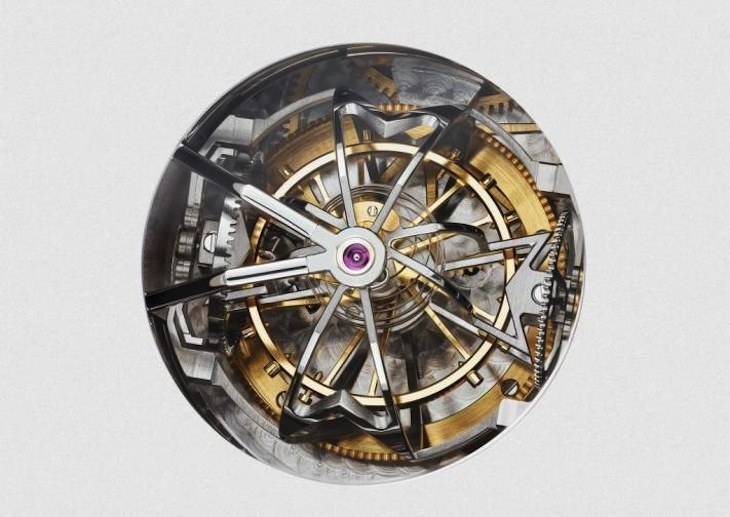
Installed on the balance wheel is a spherical hairspring, a rare sight even today – one that we have only seen a few times before, including inside the Jaeger-LeCoultre Gyrotourbillon 3. Given the challenges involved in creating such a highly specific component, it arguably would have made sense for Vacheron to work with Jaeger-LeCoultre (another brand under the Richemont umbrella) or the supplier they used, but Vacheron Constantin reached out and said that they have not collaborated on it in any way. The triple axes of rotation, the especially quick inner cage, and the spherical hairspring all make for a unique combination – even if the tourbillon otherwise could very well be the least surprising among all the features inside the Vacheron Constantin Reference 57260.
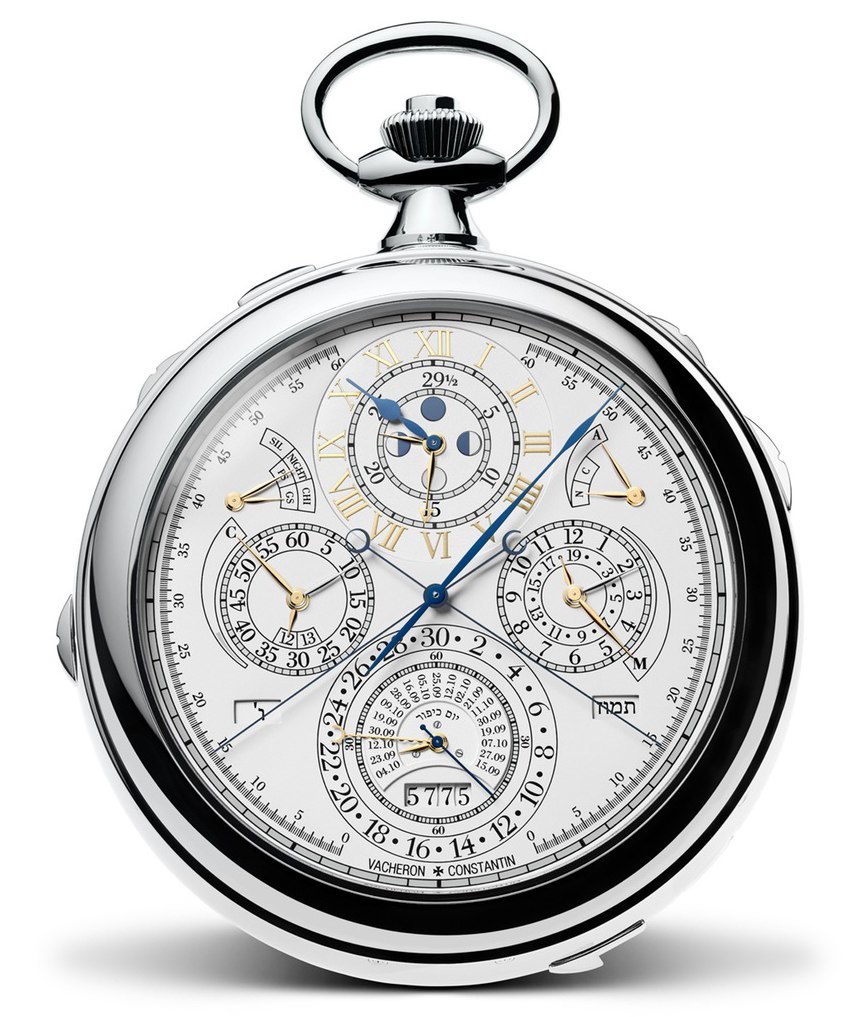
As the tourbillon, all wrapped in aluminum cages, is doing its job, time is displayed on a regulator-style display, meaning that the hours are displayed on the sub-dial at 12, and the hours, by a large, centrally mounted, blued hand. This regulator display works as well as it first did when it was originally used on regulator clocks in watch factories, where the easy and accurate legibility of the minutes enjoyed priority as watchmakers were setting their watches to a reference time – in the case of the Vacheron Constantin Reference 57260, though, the reason why this layout was truly necessary is to have only one hand (the minute hand) blocking the view on the countless sub-dials and charts.
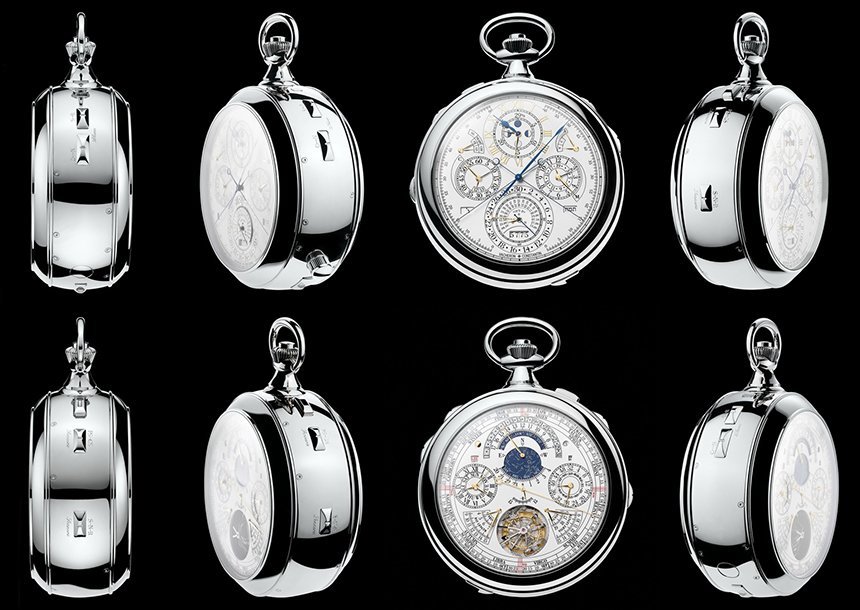
Chronometric performance dealt with, we should move onto the astronomical complications – some of the most fascinating and mind-boggling, and thanks to the numerous beautifully laid out charts and scales and exquisitely crafted golden hands, this time around, they are visually attractive as well. What truly renders such astronomical indications so dizzying is the fact that they all feed off of the time, as kept by the escapement and indicated by the hour and minute hands. As those hands rotate countless times throughout the weeks and months, they slowly drive hugely complicated sets of wheels and pinions, all painstakingly calculated to offer unique indications on more common features like the exact day and date, all the way to much more exotic ones like the way the constellations show up in the night sky or as the apparent and the mean solar time deviate.

When Vacheron Constantin announced that they had been working on creating the most complicated watch in the world, we all knew it was going to be a watch with two dials – for such a sheer number (expected to be well over 30) of complications, one dial would simply not suffice to house all the different indications, scales, and hands – and the movement needs to be more balanced out as well, of course.
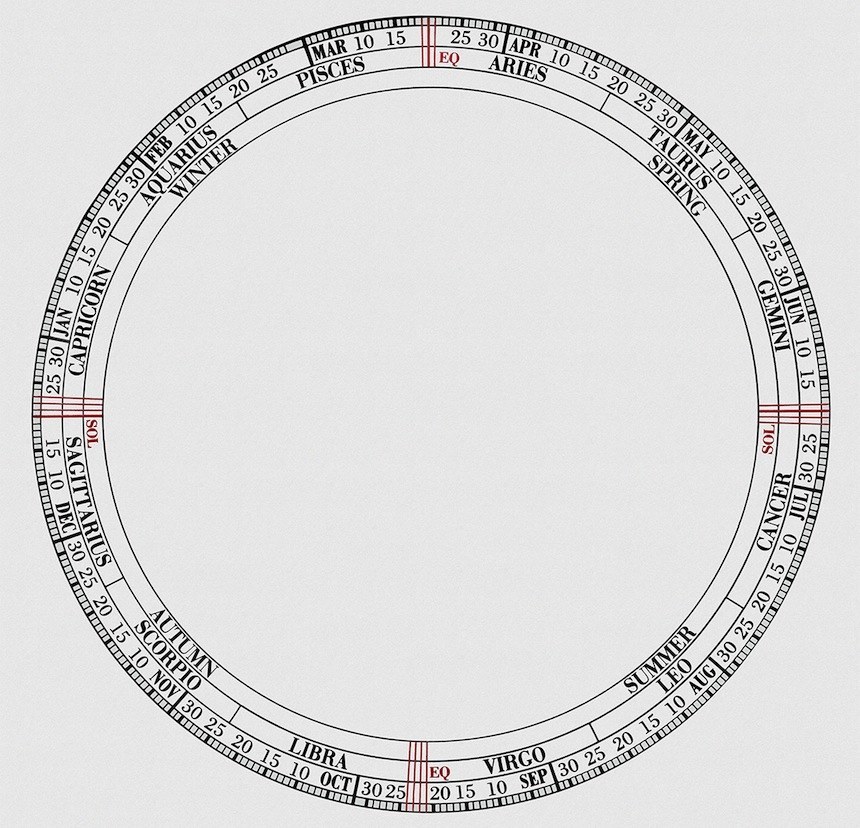
As such, the astronomical indications are scattered around both dials, and the most important one around which most others are constructed is the perpetual calendar. Spiced up with retrograde hands here and there, it will indicate everything you could possibly want to know when someone asks “What day is it?” For starters, the Vacheron Constantin Reference 57260 will tell you the exact day of the week, the date, week, and whether or not you are in a leap year (or indeed, how soon the next one is). The list goes on, though, as on the periphery of one of its back dials, it has indications for the months (with their respective lengths in days indicated), the Zodiac, as well as the season (hopefully, you’ll be familiar with the latter on your own). Last but not least, it will tell you just how much the actual and the mean (i.e., as we measure it) time deviates.

All this information is indicated on a number of scales and sub-dials, and some are even displayed numerous times – for example, you can read the date in the Gregorian perpetual calendar either on the retrograde display at the 12 o’clock sub-dial on the tourbillon side of the watch, or on the scale on the periphery of the same dial, with a large hand pointing to the actual date, month, Zodiac, and season.
And just when you thought this was all you could possibly want indicated, as a totally new complication, the Vacheron Constantin Reference 57260 offers an ISO 8601 Business Calendar that complies with the requirements of the International Organization for Standardization regarding the way of telling time for business (or rather, financial) purposes. We have already discussed the indications of the Gregorian perpetual calendar (day, date, etc.), so now, let’s see how this is new and different.
The ISO 8601 business calendar divides the year into weeks, with the first week of January being week one and so on. As you’d expect to see from something developed for the financial world, it’s all about the numbers: the number of the week and the number of the day take precedence over the month and date indications. As you can see in the image above, the number of the week is read from the outer scale, the month from the inner concentric circle, and the number of the day is indicated by a number in a window directly above the week dial, where 1 stands for Monday and 7 for Sunday.
Just about as novel and perhaps even more rare, the Vacheron Constantin Reference 57260 also prominently features a Hebraic calendar on its main dial. It is no secret that the Hebrew calendar is a very complicated one, and the fact that the 57260 features both it, a Gregorian calendar and also the ISO 8601 financial calendar version just goes to show how much potential there was left in the astronomic indications – and, in fact, this is where this amazing new watch manages to surge past its previous competitors the most, These two additional calendar displays mean a large number of extra complications, because all the displays for the years, months, days, names of the days and months and so on, all add to that total of 57 complications inside the Vacheron Constantin Reference 57260.
We have listed the complete number of indications linked to this complication, so to keep it at least a bit more simple, we’ll say that the actual date is shown at 6 o’clock on a sub-dial that ranges to 30 (remember, there are no 31-day long months in the Hebraic calendar), while the name of the day is in an aperture to the left and the name of month is displayed in an aperture to the right. Plain and simple – one would say, but the mechanics working underneath to calculate for the 19-year Metonic cycle of the calendar are truly mind-boggling.
Interestingly – but perhaps, not surprisingly – in this super-complicated piece, there are some features that actually were designed to be less complicated, and a most fitting example to that is the world time indication. Indicated on a separate twelve-hour dial, it is remarkably easy to read the actual time at another place in the world. Where exactly? Well, a small aperture above the dial reveals the name of one of 24 cities (each of the buyer’s choice), its deviation from Greenwich Mean Time, and just a bit further above, another little window shows whether it is AM or PM at the selected location. While certainly not easy to develop and realize, as far as world time indications are concerned, this appears to be one of the most useful and elegant ones ever conceived – so much so that it would be nice to see this on other, (much) more widely available pieces in the brand’s main collections.
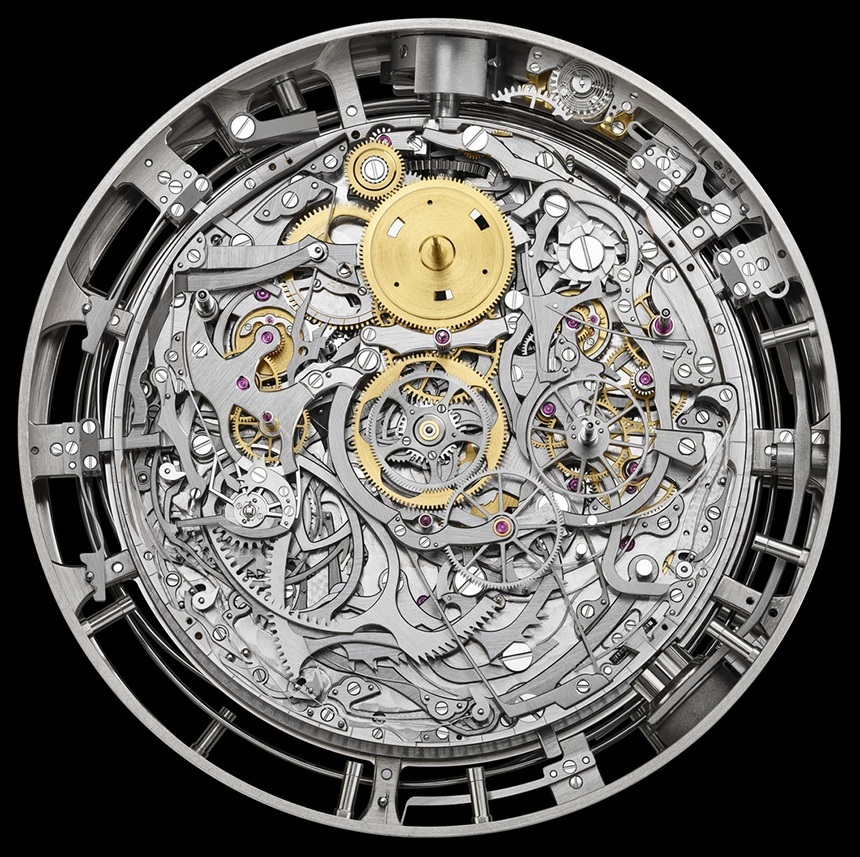
An inside look at the movement of the Vacheron Constantin Reference 57260, with much of the chiming mechanism revealed.
Chiming functions are an absolute must-have to any grand complication timepiece, and the Vacheron Constantine Reference 57260 packs not simply the best, but basically all of them. Minute repeater, grande and petite sonnerie, chiming alarm – you name it, it’s in there. In the image above, you will see a large number of the parts of the chiming mechanisms revealed – while it is a shame that all of this magnificent engineering will remain hidden under the dial, this metropolis of beautifully crafted cams, snails, and wheels all work together in an effort to help the different chiming functions operate.
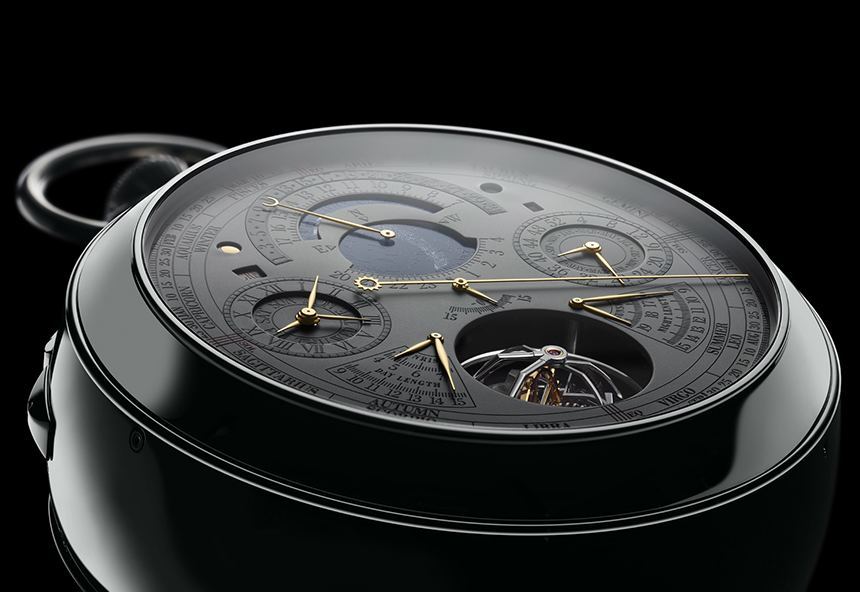

The grande and petite sonnerie has been regarded as the most difficult to produce horological complication by a number of famed watchmakers, and there is good reason for that. The grande and petite sonnerie chime the time “en passant,” i.e., as it passes, with the grande sonnerie chiming the hours and quarters every 15 minutes, while the petite sonnerie chimes the quarters as every quarter is passed – but the hours only at the start of a new hour. To add to its complexity, one would of course want to be able to turn this function off, and so the sonnerie comes with a mode selector, where you can turn the sonnerie off entirely – so that it won’t ring at the wrong time. Plus, the Vacheron Constantin Reference 57260 has added a night mode to the sonnerie (something we don’t remember seeing anywhere else before), which silences the sonnerie between 10PM and 8AM. Needless to say, a watch that is capable of chiming the time on its own is able to do so on demand, and so the Vacheron Constantin Reference 57260 also has a minute repeater, that chimes the elapsed hours, quarter hours, and minutes anytime the owner initiates the complication.
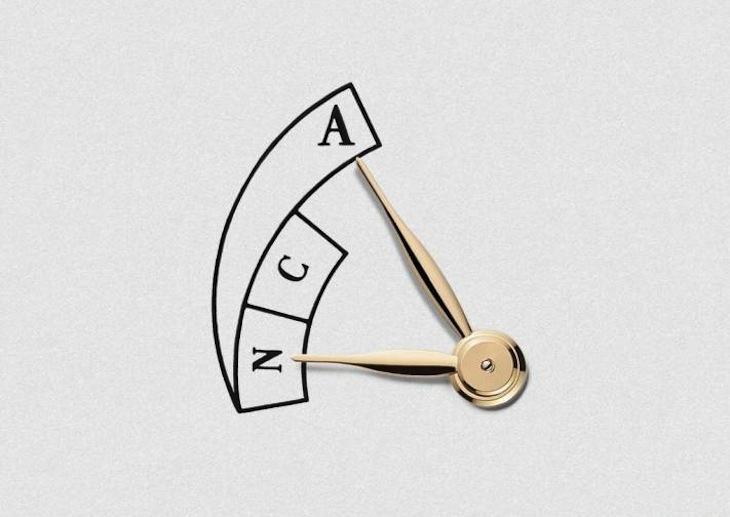
Topping off the list of chiming functions is the alarm, for which the desired time can be set on the main dial’s 12-hour sub-dial. The alarm can be turned on or off – obviously – and as a neat extra complication, it can be told to use the full Westminster chimes with all five hammers and gongs (for a really fancy wake-up call), or work in normal mode, where it strikes just one single gong that was tuned specifically for this purpose and is not used for the other chiming functions.
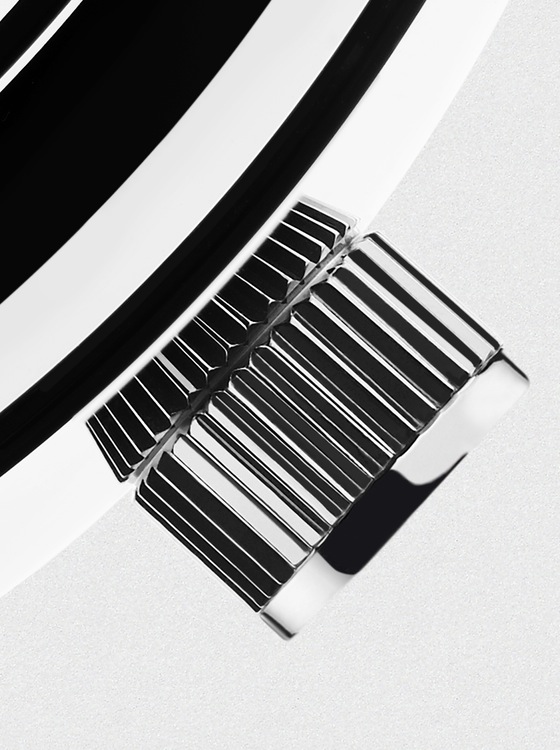
The winding crown for the alarm is actually perfectly flush with the case – which is impressive, since they couldn’t use the main crown to wind it, the watchmakers found a really elegant way of using a secondary crown in a way that it does not mess up the balanced look of the piece. This secondary crown is set free by turning the bow of the watch, and then it simply needs to be pushed back into the locked position.
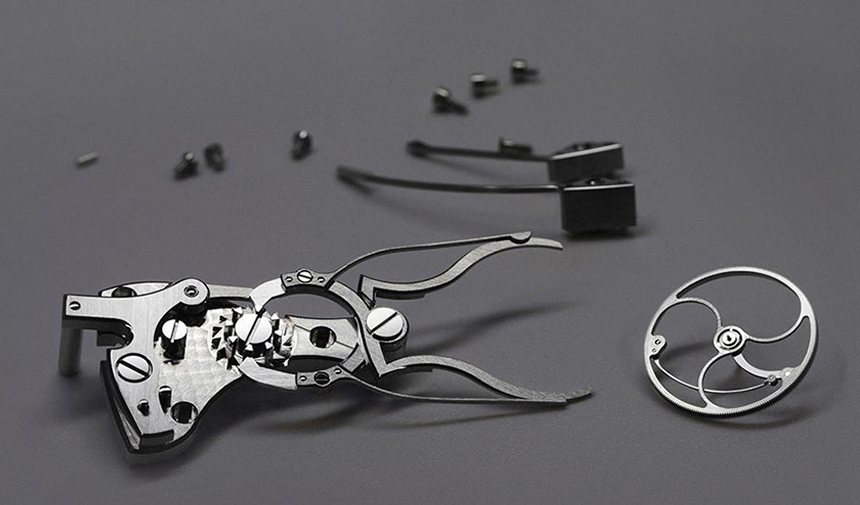
Let’s get down to business with another king of complications: the split-second chronograph. The chronograph all by itself is about on par with the chiming mechanisms because of the sheer complexity of it – whenever there is a lot of “on-demand” stuff going on, the mechanism needs to be all the more complicated. As such, the rattrapante chronograph is the most complex kind of the stopwatch function, as it allows for the measurement of two separate periods of time, which can be started, stopped and reset separately. Vacheron Constantin went all-out on this complication. To be completely descriptive, it is a mono-pusher split-second detached chronograph.
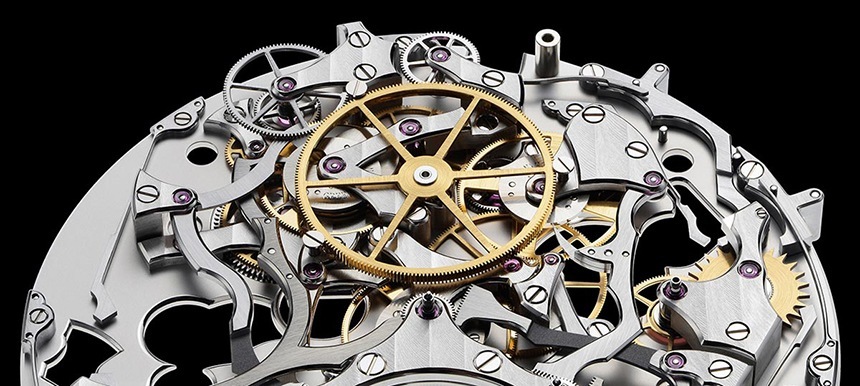
The way it works is that it uses one single pusher for the usual functions of the stopwatch – start, stop, reset – while there is a separate pusher at the 11 o’clock position to engage the split-second mode that allows you to keep on measuring a second period of time while the first chronograph seconds hand stops. It is a genuinely ingenious design, and one that also reserves a number of sub-dials on the dials, with a 12-hour and 30-minute totalizer for the chronograph – a very rare feat for rattrapante (or split-second) chronos. As is the case with A. Lange & Söhne’s Double Split, two column wheels are used for the two separate time measuring segments of the chronograph, and another, third one for the 12-hour counter.
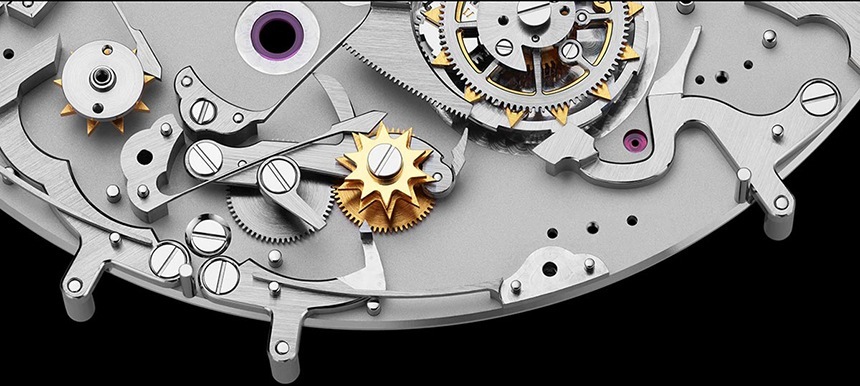
Almost three thousand words into this article, and we have still not discussed every single function of the Vacheron Constantin Reference 57260 at a length and in a detail it would arguably deserve – in fact, just the way the three calendars have been merged into one movement would deserve a dedicated article, and so would the night-mode of the sonnerie, the amazing triple-axis tourbillon… and so on and on. But at the end of the day, the point is that high-end watchmaking, haute horlogerie, is not dead, but on the contrary: it manages to keep upping the bar, and keep up the pace with all the other, much younger and rapidly developing industries.
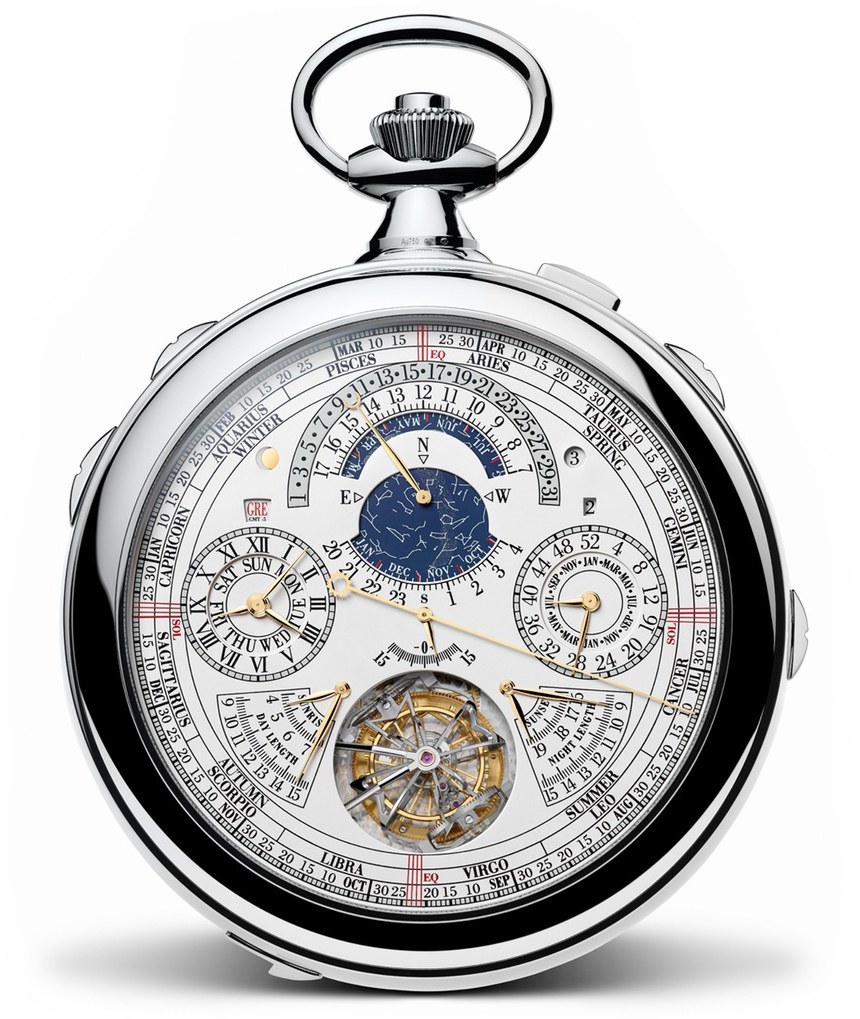
At a time when some thought just about everything that could be done with watch movements has been done, when all complications have been invented, Vacheron Constantin delivered a unique timepiece that presented us with a number of new and interesting complications – along with some others that we have already known, but even those have a twist or two in store for us. We genuinely hope to see such novel engineering achievements not every eight years but more often – even (or rather: especially!) if that would mean seeing them not cramped into one unattainable piece, but many more which are part of a renowned brand’s main collections. vacheron-constantin.com

